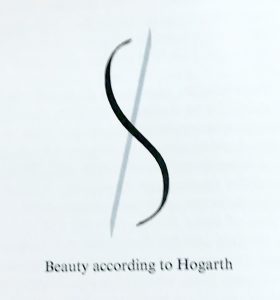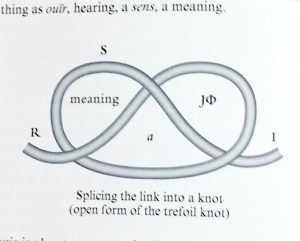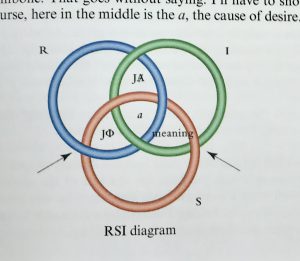Cheshire Diagrams: Poetics
The experiment tests the inferential practice of conduction (navigating information archive using the aesthetic relationships of dream work). Composed as images (nine diagrams consisting of twenty-two emblems), the Diagrams themselves in principle could be published in print like any other illustration, but their native existence as emblems (text/image constructions), designed using collage poetics, appropriation, visual poetics, allusion—the resources of aesthetics in short—becomes practical for general education in the digital apparatus. They were created to test the possibility of slides to stand on their own, apart from the lecture they conventionally illustrate in such software as PowerPoint or Keynote. The lectureless slide is identified as such with the name “zlide.” “The Cheshire Diagrams” demonstrate conduction testing the zlide form (sliding of the signified under the signifier).
The book, Konsult: Theopraxesis, theorized the generation of an electrate genre of education, equivalent of dialogue for digital equipment. The website, konsultexperiment.com, takes up where the book leaves off, shifting away from theory to practice (to theopraxesis). Using Plato’s Republic as template relay to generate an electrate genre, the Theory proposed the historical city of Venice, Italy, as a resource for imagining the social place in electracy that Plato outlined for literacy as an ideal Republic. Venice was selected to figure this new dimension for numerous reasons, beginning with its contemporary status as an actual place transforming into fantasy (as in Italo Calvino’s Invisible Cities). The current threat to the city posed by the overwhelming number of tourists is a symptom of what recommends it to represent the “Mecca” of electracy. This reflection on imaginal Venice is to be extended in the experiments into the more properly electrate order of theme parks, specifically in the casinos of Las Vegas, The Venetian Casino in particular.
Within the larger frame of the ideal city, Plato articulated his metaphysics in the Allegory of the Cave, perhaps the best-known fragment of philosophy in all of literacy. An ongoing experiment for konsult is to devise an equally effective allegory of electrate metaphysics. Konsult (the book) nominated the exiled Russian poet Joseph Brodsky’s Watermark, a memoir of his annual visit to Venice during the high-water month of December, as basis for an Allegory of the Wave. Venice and Watermark are transitional entries, useful for introducing the project, inviting a collaborative engagement with this challenge: imagining the place and practices of the dimension of reality under construction in electracy. Such may be an assignment organizing an entire curriculum.
“The Cheshire Diagrams” take up this challenge in a modest way, moving beyond the book and the Allegory of the Wave, performing rather than discussing electrate metaphysics. Within electracy proper the equivalent of Plato’s Republic is Walt Disney’s Disneyland (Disney World), prototype of theming. Mickey Mouse is our Socrates in this scenario. The Diagrams experiment began with the hypothesis that an allegory of electrate metaphysics (attraction/repulsion as fundamental cause) already existed in the chase genre of Cat & Mouse animation (Tom & Jerry et al). It is the reality of predation troped into a figure of insatiable desire and anxiety. This line of inquiry led to George Herriman’s Krazy Kat as most eloquent dramatization of drive energy as minimum system (Krazy, Officer Pupp, Ignatz, Brick), and finally to the Cheshire Cat in Lewis Carroll’s Alice in Wonderland. The series of emblems uses the inferential process of conduction (dada bachelor machine logic) to explore a cat-mouse joke in Alice (the gag is to konsult what dialectic is to dialogue). The joke is based on a macaronic pun: la souris in French means “smile,” “mouse,” and “girl” (in slang). The discovery of the experiment is that the Cheshire Cat’s grin functions as an equivalent in theopraxesis for category in literate reasoning: the syntagm of a grin without a cat separates from its context to circulate through information as a support for inference by means of aesthetics (Kant’s reflective judgment). A first response to this discovery (conduction as a mode of inference navigates information passing from the known into the unknown) is that there are other such primary image/texts already extant, modeling a poetics for creative metaphysics. “The Cheshire Diagrams” models an operation for itself but also as an invitation and call for collaboration.

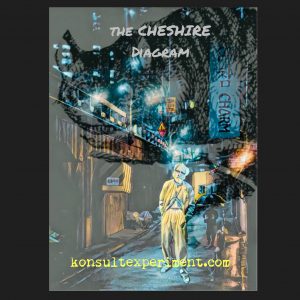
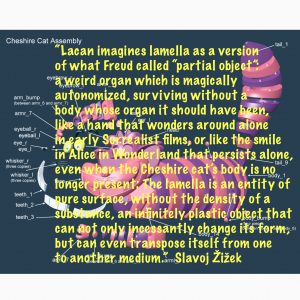

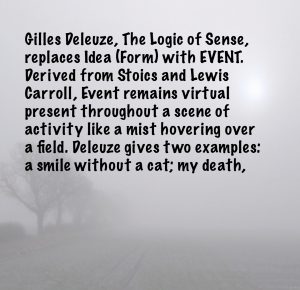

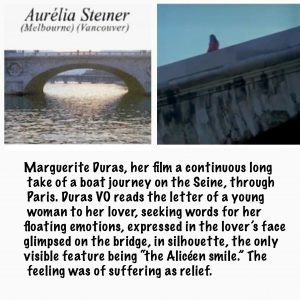
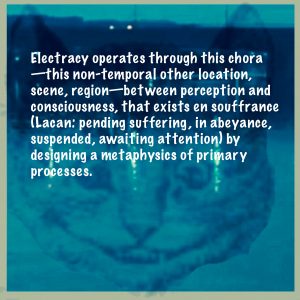
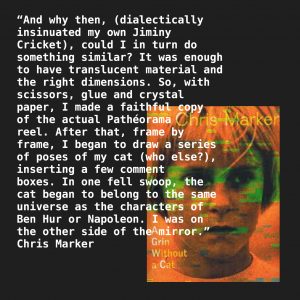

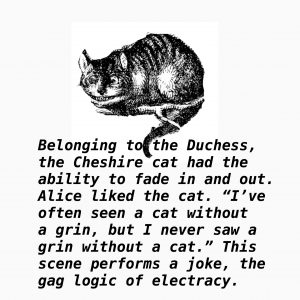
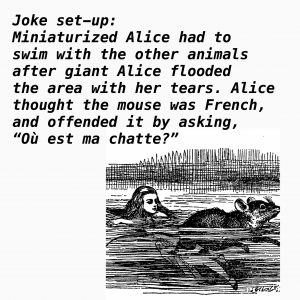
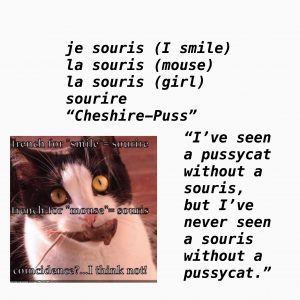

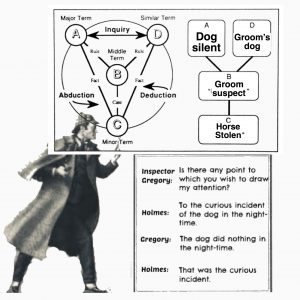
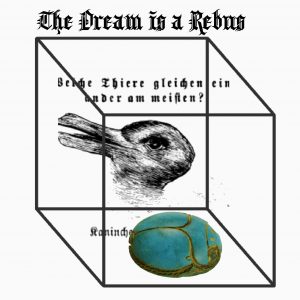
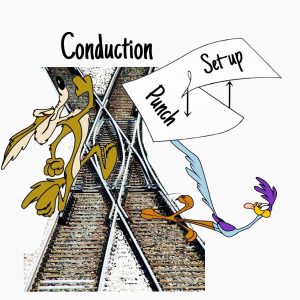



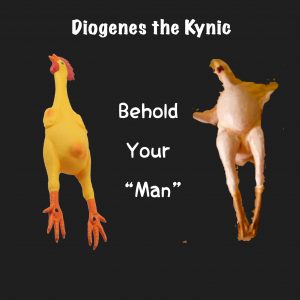
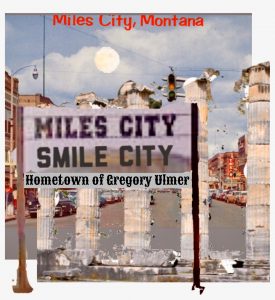
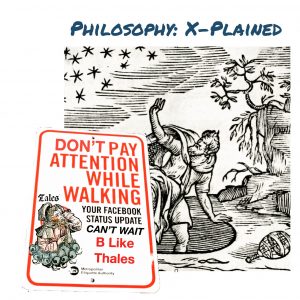
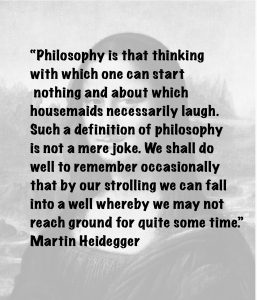
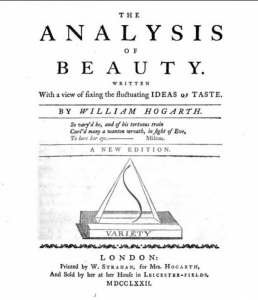 A second affiliation with tradition important to note in this seminar is Lacan’s reference to Hogarth’s curved line of beauty as relevant to the genealogy of his knot topology. This connection makes explicit Lacan’s contribution to the larger question of the gramme, the invention of the plasmatic line in the Paleo apparatus, in continuing service up to the present, now augmented in electracy through animation and digital FX. Sergei Eisenstein cited Disney’s animated film, Steamboat Willie (1928) as a revelation of the new order opened up in media by the plasmatic line. We will have more to say about the ontological properties of this line.
A second affiliation with tradition important to note in this seminar is Lacan’s reference to Hogarth’s curved line of beauty as relevant to the genealogy of his knot topology. This connection makes explicit Lacan’s contribution to the larger question of the gramme, the invention of the plasmatic line in the Paleo apparatus, in continuing service up to the present, now augmented in electracy through animation and digital FX. Sergei Eisenstein cited Disney’s animated film, Steamboat Willie (1928) as a revelation of the new order opened up in media by the plasmatic line. We will have more to say about the ontological properties of this line.